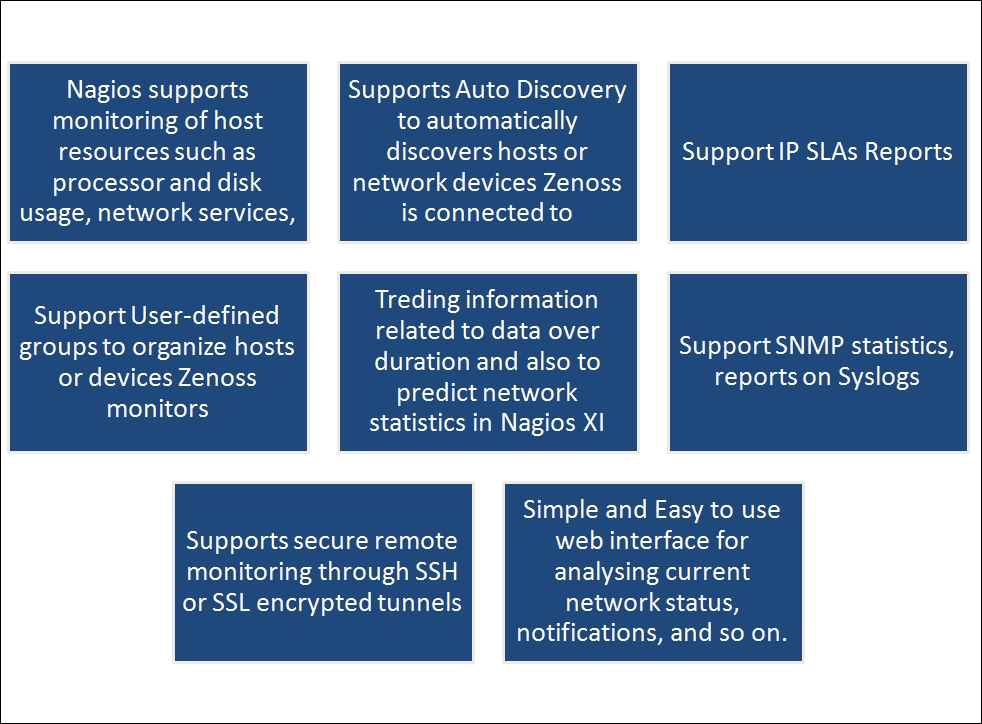In this section, we will cover Nagios monitoring tool, Azure Web Apps Monitoring, and AWS Elastic Beanstalk.
Nagios Core is an open source application written in C and PHP to monitor servers, networks, and infrastructure.
Below are some important features of Nagios:

Nagios XI uses Nagios Core as the back-end and provides an extended interface for monitoring resources. Nagios XI is supported in CentOS and RedHat. Let's have a quick tour of Nagios XI.
Go to https://www.nagios.com/downloads/nagios-xi/ and download VMware 64 bit virtual machine so we can use the image in VMware workstation. Open the OVF in the VMware workstation:

Importing Nagios OVF will take some time:

Wait for the completion of the process:

Once importing process is completed, click on the Power on this virtual Machine:

Once the virtual machine is ready, login as root with password
nagiosxi. Note the URL to access Nagios dashboard:
Open the Nagios...



